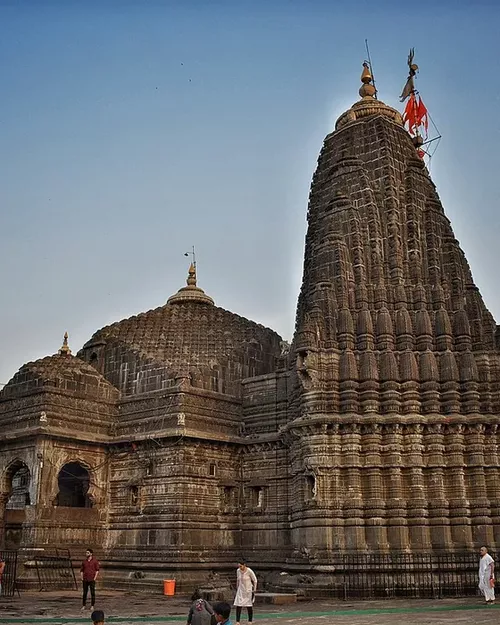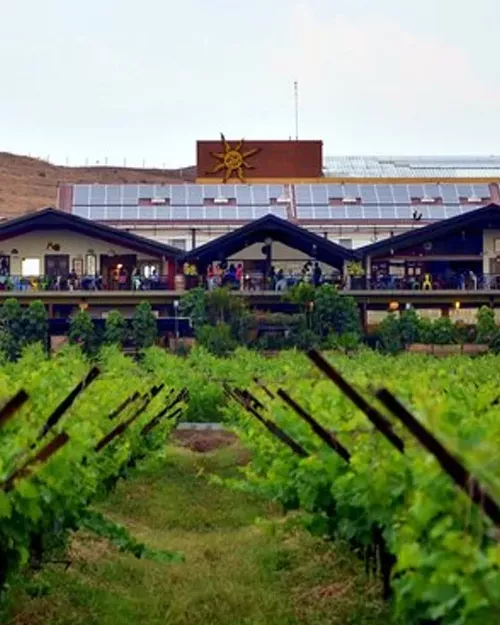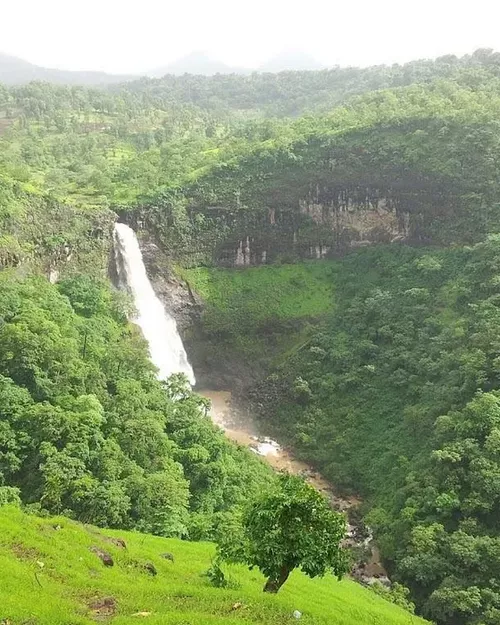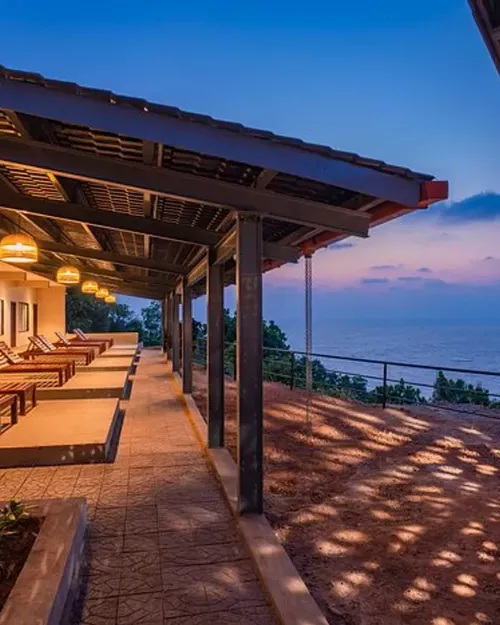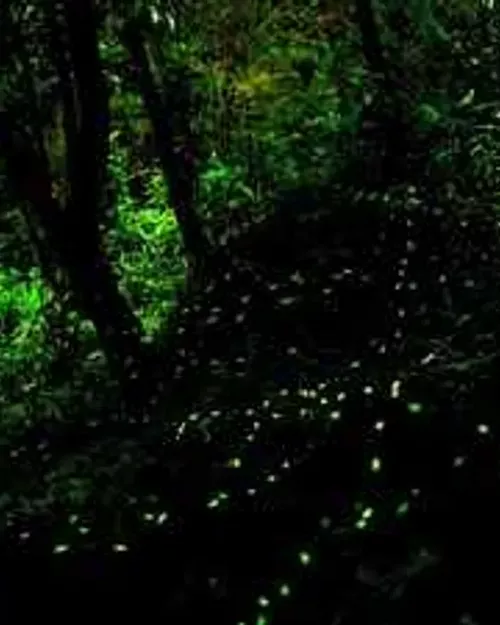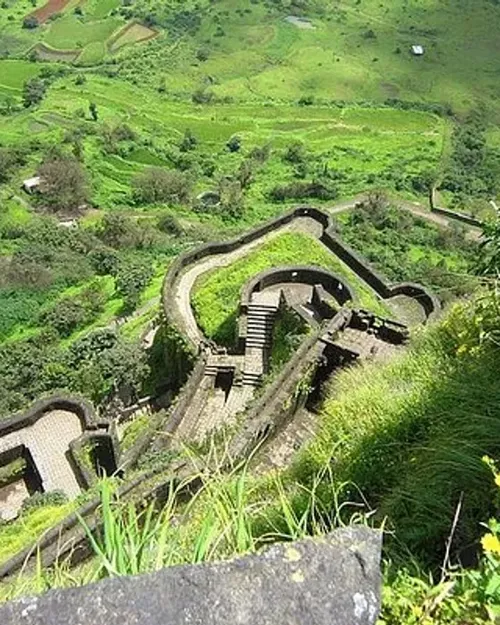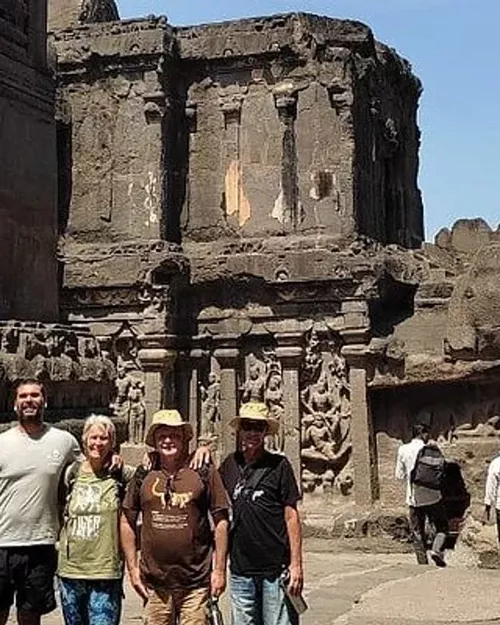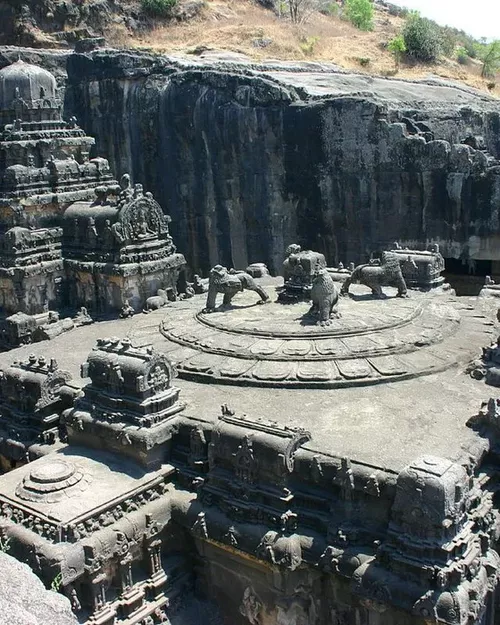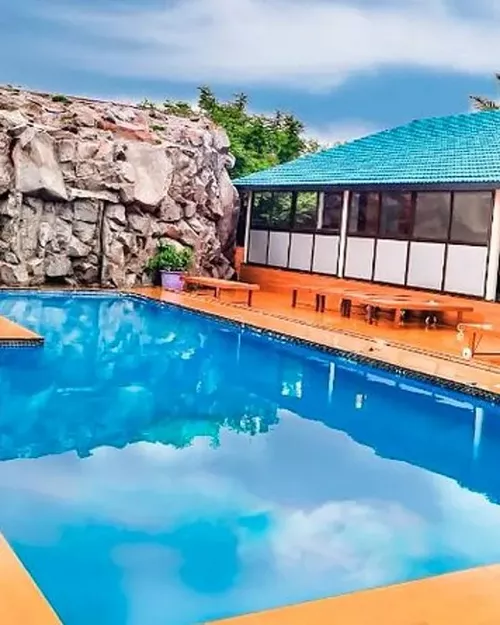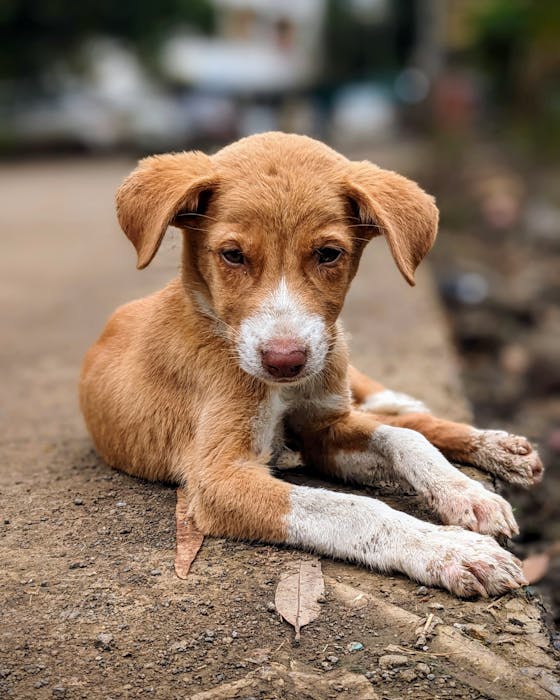Trimbak is popular for
Trimbak in next 3 month
Weather in Trimbak
December in Trimbak is cool and misty with moderate air quality, making it a pleasant time to visit.
Usual trip duration
A 2-3 day trip to Trimbak allows you to explore the famous Trimbakeshwar Temple, take a dip in the holy Kushavarta Kund, and visit nearby vineyards for wine tasting.
Budget friendly destination
Ideas To Plan Your Trip
Places To Visit
Places To Eat
Frequently Asked Questions about Trimbakeshwar
The best time to visit Trimbakeshwar is during the winter months, from October to March. The weather during this period is pleasant and ideal for sightseeing and temple visits. The temperature ranges from 10°C to 25°C, making it comfortable for exploring the region. Avoid visiting during the monsoon season (June to September) as heavy rainfall can disrupt travel plans and make it difficult to access some areas.
Additionally, it's advisable to check the dates of major festivals like Kumbh Mela (which happens every 12 years) and Shivratri before planning your trip, as the town gets extremely crowded during these times. If you are planning to visit during these festivals, make sure to book your accommodation and transportation well in advance.
Trimbakeshwar is well-connected to major cities in Maharashtra by road and rail. Here's a detailed breakdown of the different modes of transportation:
| Mode of Transport | Details |
|---|---|
| By Air | The nearest airport is Nashik Airport (ISK), also known as Ozar Airport, which is approximately 40 km away. However, it has limited connectivity. The Chhatrapati Shivaji Maharaj International Airport in Mumbai (BOM) is a larger international airport, about 175 km away. From the airport, you can hire a taxi or take a bus to Nashik, and then another bus or taxi to Trimbakeshwar. |
| By Train | The nearest railway station is Nashik Road Railway Station (NK), which is about 30 km from Trimbakeshwar. Several trains connect Nashik to major cities in India. From Nashik Road Railway Station, you can hire a taxi, take a state transport bus, or use auto-rickshaws to reach Trimbakeshwar. |
| By Road | Trimbakeshwar is well-connected by road to Nashik and other nearby cities. State transport buses (MSRTC) frequently operate from Nashik Central Bus Station to Trimbakeshwar. You can also hire taxis or private buses from Mumbai, Pune, and other major cities in Maharashtra. The roads are generally well-maintained, offering a comfortable journey. |
Trimbakeshwar is renowned for its ancient temples and scenic beauty. Here are some key attractions you should not miss:
| Attraction | Description |
|---|---|
| Trimbakeshwar Jyotirlinga Temple | The main attraction is the ancient Trimbakeshwar Temple, one of the twelve Jyotirlingas dedicated to Lord Shiva. It's known for its unique architecture and the presence of three lingams representing Brahma, Vishnu, and Mahesh (Shiva). Be prepared for queues, especially during peak seasons and festivals. |
| Kushavarta Tirtha | This is the sacred pond where the Godavari River is believed to originate. Pilgrims often take a dip in the pond to cleanse their sins. It is located close to the Trimbakeshwar Temple. |
| Nil Parvat | A small hill near the temple, offering panoramic views of the surrounding landscape. It's a relatively easy climb and provides a peaceful escape from the temple crowds. |
| Gautam Talav | A serene lake located a short distance from Trimbakeshwar. It’s a peaceful spot for relaxation and offers scenic views, particularly during sunrise and sunset. |
| Anjaneri Hills | Considered the birthplace of Lord Hanuman, Anjaneri is a must-visit for devotees and trekkers. The hills are dotted with ancient caves and temples, offering a blend of spirituality and adventure. |
Beyond visiting temples, Trimbakeshwar offers various activities to enrich your trip:
- Spiritual Pilgrimage: Participate in the various rituals and prayers at the Trimbakeshwar Temple. Consult local priests for guidance on performing specific pujas and ceremonies.
- Trekking and Hiking: Explore the surrounding hills and mountains. Anjaneri Hills is a popular spot for trekking, offering moderate trails and stunning views.
- Photography: Capture the scenic beauty of the Western Ghats and the architectural marvels of the ancient temples. Sunset views from Nil Parvat are particularly rewarding.
- Relaxation and Meditation: Find peace and tranquility by the Gautam Talav or in the quiet corners of the Anjaneri Hills. These spots are ideal for meditation and introspection.
- Exploring Local Culture: Interact with the local community and learn about their traditions and customs. Visit local markets to experience the vibrant culture and sample local delicacies.
Trimbakeshwar's location in the Nashik district makes it a convenient base for exploring several other attractions. Here are a few noteworthy destinations:
| Destination | Distance (approx.) | Highlights |
|---|---|---|
| Nashik City | 30 km | Panchavati, Sula Vineyards, Pandavleni Caves, Ramkund. |
| Shirdi | 120 km | Shri Saibaba Temple, Dwarkamai, Chavadi. |
| Igatpuri | 45 km | Dhamma Giri Vipassana International Academy, Bhatsa River Valley, Camel Valley. |
| Saputara | 130 km | A hill station in Gujarat, known for its scenic beauty, Saputara Lake, and Sunset Point. |
Trimbakeshwar offers a unique shopping experience centered around religious items, local handicrafts, and souvenirs. While it's not a major shopping destination, you can find interesting items to take back home:
| Shopping Area/Item | Description |
|---|---|
| Temple Area Shops | Near the Trimbakeshwar Temple, you'll find numerous shops selling religious items like idols of deities, puja items (incense, camphor, flowers), rudraksha beads, and religious books. These are perfect for pilgrims and devotees. |
| Local Handicrafts | Look out for local handicrafts made by artisans in the surrounding villages. These may include small wooden carvings, traditional jewelry, and handmade textiles. |
| Souvenirs | You can find souvenirs such as keychains, magnets, and small trinkets with images of the Trimbakeshwar Temple and Lord Shiva. These are great as mementos of your trip. |
| Local Markets | Explore the local markets for everyday items and fresh produce. You may also find vendors selling traditional sweets and snacks unique to the region. |
For a wider variety of shopping options, Nashik City, located about 30 km away, offers a more diverse range of shops and malls.
Trimbakeshwar offers a range of dining options, from simple local eateries to restaurants serving regional and North Indian cuisine. Here are some recommendations:
| Restaurant Type | Description |
|---|---|
| Local Eateries | Several small restaurants and dhabas near the Trimbakeshwar Temple serve simple and affordable meals. These are great for a quick and authentic taste of local cuisine. |
| Vegetarian Restaurants | Given its religious significance, Trimbakeshwar has numerous vegetarian restaurants serving traditional Maharashtrian dishes. Look for restaurants that offer thalis (a platter with a variety of dishes) for a complete culinary experience. |
| Restaurants in Hotels | Many hotels in Trimbakeshwar have in-house restaurants that cater to a wider range of tastes. These restaurants often serve North Indian, South Indian, and Chinese dishes, in addition to local cuisine. |
| Street Food | Explore the street food stalls near the temple for local snacks like vada pav, misal pav, and sabudana khichdi. These are delicious and budget-friendly options. |
As Trimbakeshwar is a religious place, it is advisable to dress modestly, especially when visiting temples. Here are some guidelines:
- For Women: Sarees, salwar kameez, or other traditional Indian attire are highly appropriate. Avoid wearing revealing clothing such as shorts, skirts, or sleeveless tops. Covering your head with a scarf or dupatta is also a sign of respect when entering the temple.
- For Men: Traditional Indian attire like dhoti or kurta pajama is suitable. Trousers and shirts are also acceptable, but avoid wearing shorts or sleeveless shirts.
- General: It's always a good idea to dress respectfully and conservatively when visiting any religious site in India. This shows reverence for the local customs and traditions.
Trimbakeshwar is known for several important rituals performed to alleviate various issues. Some of the prominent rituals are:
- Narayan Nagbali: This ritual is performed to fulfill unfulfilled desires of ancestors or to get rid of curses. It involves offering prayers to Lord Vishnu (Narayan) and the serpent god (Nagbali).
- Kalsarpa Dosha Puja: This puja is performed to nullify the negative effects of Kalsarpa Dosha, an astrological condition. It involves offering prayers to serpent deities to mitigate the malefic effects.
- Tripindi Shradh: This ritual is performed to provide peace to the souls of ancestors who have died unnaturally or are wandering without salvation. It involves offering three pindas (rice balls) to represent ancestors.
- Mahamrityunjaya Mantra Jaap: Recitation of the Mahamrityunjaya Mantra is considered highly auspicious and is performed to seek longevity, health, and protection from untimely death.
It is advisable to consult with local priests (pandits) for guidance on performing these rituals correctly and to understand their significance.
Photography inside the main sanctum of the Trimbakeshwar Temple is generally prohibited. This is to maintain the sanctity of the temple and to avoid disturbance to other devotees. However, you may be allowed to take photographs of the temple exterior and the surrounding areas, but it's always best to confirm with the temple authorities or local guards.
It's essential to respect the rules and regulations of the temple authorities and to avoid using flash photography, which can be disruptive. Always be mindful of other devotees and maintain a respectful demeanor while taking photographs.
Yes, Trimbakeshwar offers a range of accommodation options to suit different budgets and preferences. You can find budget-friendly guesthouses (dharamshalas), mid-range hotels, and a few luxury resorts in and around the town. Here's a breakdown:
- Budget Guesthouses (Dharamshalas): These are the most affordable options and are often located near the temple. They provide basic amenities and are suitable for pilgrims on a tight budget.
- Mid-Range Hotels: These hotels offer comfortable rooms, essential amenities, and often have in-house restaurants. They provide a good balance between comfort and affordability.
- Luxury Resorts: A few luxury resorts are located on the outskirts of Trimbakeshwar, offering premium amenities, spacious rooms, swimming pools, and other recreational facilities. These are ideal for those seeking a more luxurious and relaxing stay.
It's advisable to book your accommodation in advance, especially during peak seasons and festivals, to ensure availability and to get the best rates. Online travel portals and hotel websites are good resources for finding and booking accommodations in Trimbakeshwar.
Brahmagiri Hill is a prominent geographical and spiritual landmark near Trimbakeshwar. It is considered the source of the Godavari River, one of the longest rivers in India, and holds immense religious significance.
According to Hindu mythology, Brahmagiri Hill is where Lord Shiva appeared to liberate the river Godavari from the clutches of sage Gautam. The river is said to have originated from the hair of Lord Shiva on this hill. Pilgrims often climb Brahmagiri Hill to reach the source of the Godavari and to offer prayers.
The trek to the top of Brahmagiri Hill is considered challenging but rewarding. The hilltop offers panoramic views of the surrounding landscape, including the Trimbakeshwar Temple and the lush green valleys of the Western Ghats. It's a popular spot for trekking and nature enthusiasts.




